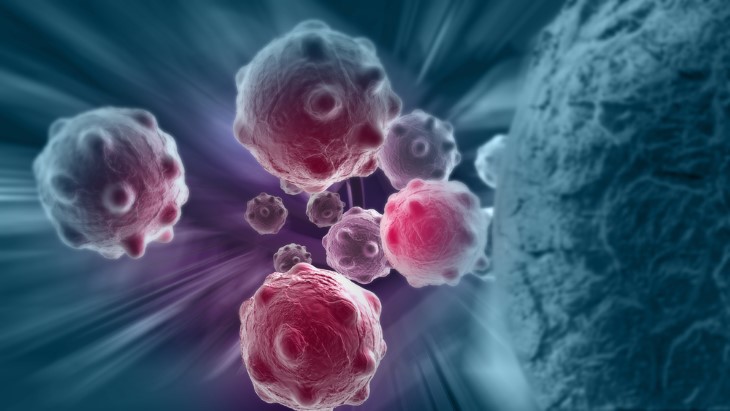
In the relentless pursuit of effective cancer treatments, a groundbreaking discovery emerges from the laboratories of Rice University, Texas A&M University, and the University of Texas. This revolutionary method, employing the power of vibrating molecules, heralds a new dawn in the fight against cancer, offering hope for a more efficient and less invasive approach to treatment.
At the heart of this discovery are aminocyanine molecules, commonly used in bio-imaging as synthetic dyes. These were selected because they are known for their stability in water and ability to adhere to cell membranes.

When stimulated by near-infrared light, these molecules exhibit synchronized vibrations potent enough to disrupt cancer cell membranes. In other words, when we shine a certain wave of light at these molecules it causes them to all vibrate together on hte same frequency and it is this combined effect of all their vibrations in sync that destroyes the membranes of cancer cells. This innovative technique, led by a collaborative team of researchers including Ciceron Ayala-Orozco and James Tour, marks a significant leap in cancer therapy.
Why use this wave of light?
A pivotal aspect of this method is the use of near-infrared light, which can penetrate much deeper into the human body compared to visible light. This characteristic allows the treatment to reach cancerous growths within bones and organs, potentially eliminating the need for invasive surgeries. According to chemist James Tour of Rice University, this method of light penetration is a "huge advance," offering a new pathway to target hard-to-reach cancers.

In laboratory tests, the molecular jackhammer technique demonstrated a staggering 99% efficacy in obliterating cultured human melanoma cells. Furthermore, when tested on mice with melanoma tumors, half of the animals became cancer-free, showcasing the method's tangible impact to completley clear cancer from a body.
The structure and chemical properties of aminocyanine molecules play a crucial role in their efficacy. These molecules, when stimulated, oscillate in sync, generating a plasmonic motion across the molecule. This motion, akin to a molecular arm, helps anchor the molecule to the lipid bilayer of the cancer cell membrane, leading to its eventual rupture.
This method of cancer treatment diverges significantly from conventional photodynamic or photothermal therapies. As Ayala-Orozco emphasizes, this is the first time molecular plasmons have been utilized in this manner to produce a mechanical action aimed at a specific goal - tearing apart cancer cells' membranes.

The study's success is a testament to the collaborative efforts of multiple institutions. Researchers at Texas A&M University, led by quantum chemist Jorge Seminario, conducted time-dependent density functional theory analysis on the molecular features involved in the jackhammering effect. Meanwhile, cancer studies on mice were performed at the University of Texas MD Anderson Cancer Center, in collaboration with Dr. Jeffrey Myers.
What is the next step?
While still in the early stages of research, these findings open promising avenues for future cancer treatments. The team is exploring other types of molecules with similar properties for potential therapeutic applications. The biomechanical nature of this technique presents a formidable challenge for cancer cells to develop resistance against, a common issue with many current cancer treatments.

This research represents a paradigm shift in cancer therapy, moving away from chemical treatments to using mechanical forces at the molecular scale. It offers a glimpse into a future where cancer treatment could be less invasive, more targeted, and potentially more effective.In Summary...
The discovery of using vibrating molecules to combat cancer cells is a monumental stride in cancer research. While it has not been tested on human subjects yet, it's astonishingly high efficacy with human cells in lab conditions and with real mice offer us real hope into a method that is not only non-invasive but may also be incredible effective. As this research progresses, it holds the potential to fundamentally change the way we approach cancer treatment, making it a less daunting and more hopeful journey for those affected by this multi-headed disease.
This research was published in Nature Chemistry.